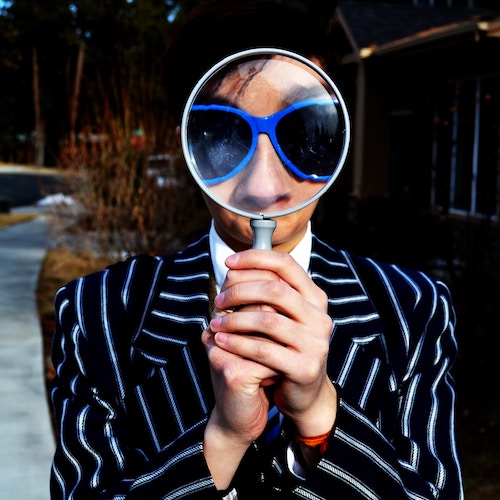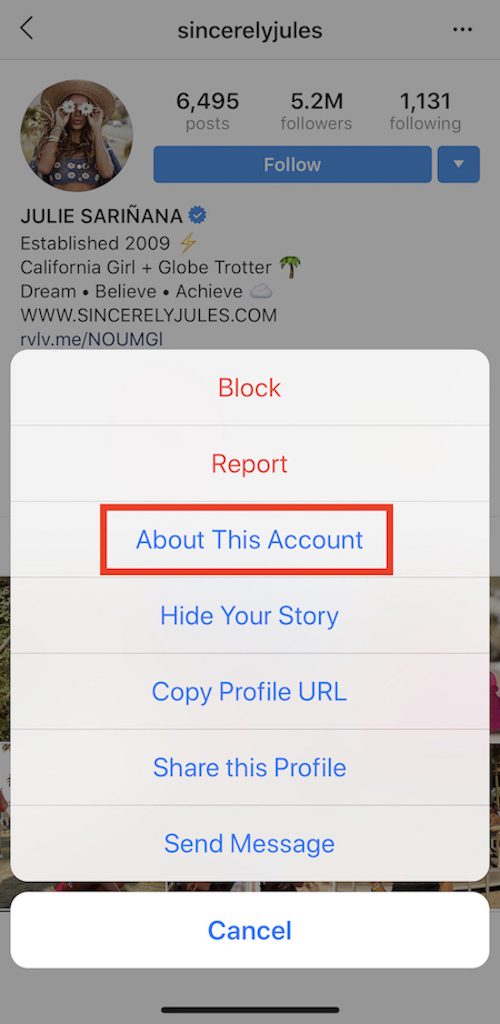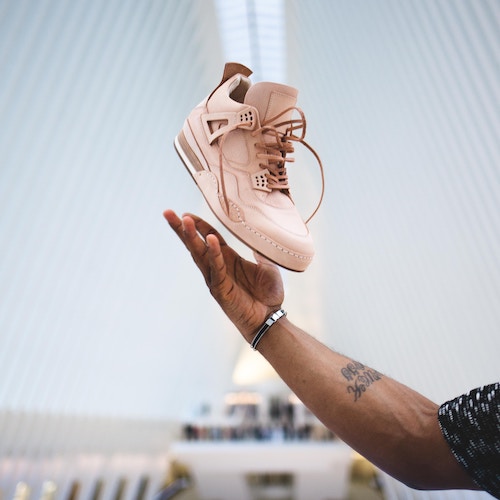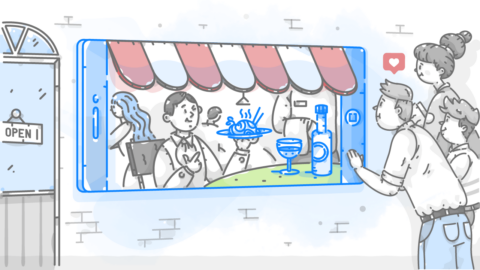Influencer marketing is a lucrative field — and like anything that’s profitable, it’s also ripe for scammers.
Brands need influencer marketing because it’s so incredibly effective, but they also need a way to make sure they’re choosing influencers who actually have … you know … influence.
Before you get wrapped up in dreams of all the money you’re about to make, go through your, “Is this a legit Instagram influencer?” checklist.
What is a Fake Influencer?
A fake influencer has more fake comments, likes and followers than real ones. The influencer may have signed up for a service that creates thousands of fake accounts which are then used to engage with other accounts. It’s not at all hard or expensive to find these services.
Influencers with fake followers present themselves as real influencers even if they don’t have the audience, track record or marketing savvy to back it up. They may get sponsorship offers, but they’re not doing a good job in their role as an influencer – and you don’t want to be one of the brands that fall for it. They don’t have any actual influence over real humans, and therefore hiring them to promote your products isn’t going to lead to results.

It can be hard to differentiate fake social media influencers from merely unsuccessful influencers who just aren’t worth it, so many of these tips will apply to both kinds. Either way, these signs point to the type of influencer you should not invest in.
How to Spot Fake Influencers
Sniffing out fake Instagram influencers is sometimes a cake walk – find a profile with two posts and a million fans and it’s filled with Instagram fake followers, no doubt about it.
Other times, you have to consider the account as a whole and separate what looks real from what appears to be fake.

Source
Here are Nine Ways to Assess a Potential Influencer
1) Followers to Following Ratio
Influencers typically follow 1 to 5 percent of their following. If the ratio is much higher than that, it could be due to cheap growth hacks. For example, some Instagram users will follow anyone and everyone to get a courtesy follow in return, then unfollow a bunch of people all at once.
Below is an example of an obviously-hacked followers-to-following ratio. Not only is this account following far too high a percentage, but it also racked up almost 7,000 followers with just nine posts:

This is an example of a more realistic, even low, followers-to-following ratio of less than one percent:

Shay’s followers are highly engaged, so the fact that she doesn’t follow more people doesn’t seem to affect engagement. Many commenters refer to her children by name, which means they’re invested in the content she posts.
2) Quality of Followers
Influencers with fake followers will have a bot-heavy followers list. If you skim through the list, and many of their followers have private accounts or no profile photos, chances are they’re from a paid service to boost engagement numbers.
Know this, though: fake accounts are huge on Instagram, and even well-meaning influencers are going to get some Instagram fake followers and engagement.
3) Content to Followers Ratio
Other than an already-established celebrity or social media influencer who has just opened an Instagram account, any account with few posts and a ton of followers is fake.

Source
Real influencers have been posting on some sort of reliable schedule for the past several months or years in order to earn their followers. True audiences aren’t easy to acquire–they only come from regularly engaging a targeted audience with quality posts over time.
Look for several pages of posts from anyone claiming to have an influence.
4) Account Lifespan
Similar to content-to-followers ratio is account lifespan, in which we look at the total time the account has been open, not just how much has been posted. If an account is brand new and has a huge follower base, that should be a warning sign.

Once in a blue moon, an influencer will strike it rich fast. Overnight successes are rare, though, and most true influencers have taken the time and dedication required to build a large and loyal following.
It is possible that an influencer gets a sudden spike of followers because of an Instagram feature, press coverage or a viral post. Dig a little deeper to find out if this is the case.
On the flip side, it’s also a cause for concern if an influencer has had an account for a long time but still has a small following. A skilled influencer will know how to reach their audience and grow their account over time. Even an influencer in a small, specific niche should show some steady growth.
5) Engagement to Follower Ratio
While you can’t see the influencer’s analytics (unless they’re willing to take a screenshot for you), you can still do some homegrown engagement research of your own.
Choose ten Instagram posts, making sure to select a variety of posts. You don’t want to pick the ten latest posts or posts with the same promotion or type of product; mix ‘em up. Then, check out how much engagement the posts have (likes and comments). There should be an engagement rate of 1-3 percent of the total following. Smaller influencers often have higher-than-normal engagement rates because they have a more-engaged following.
Find Legit Instagram Influencers for Your Brand
Let us do it for you, with this exclusive offer.
For just $7 we’ll send you a custom list of 30 micro-influencers in categories such as:
Automotive | Beauty/Skincare | Cannabis | Fashion/Apparel | Fitness | Food & Beverage | Golf | Guns | Pets | Photographer/General | Swimwear | Travel | Yoga
If you’re serious about leveraging Instagram influencers to grow your business, you’d be crazy not to take us up on this.
Each list is customized to your exact requirements. Yes, we actually have a real human being go on Instagram and dig around for these people!
At only $7, it’s a tiny investment that will save you hours of work. So get it now while you can:
==> GET YOUR CUSTOM INFLUENCER LIST <==
Some posts will fall out of the normal percentage range; this isn’t necessarily something to worry about. Certain posts are more or less engaging than others. Sometimes the influencer is trying something new, so it won’t get the attention it normally does – or it’ll get more attention because it stands out.
What you’re looking for is a consistent engagement rate. If it’s consistently under 1%, that means their followers don’t care about what they post most of the time. If it’s consistently higher than 3%, those likes and comments may be from bots. Note that if the engagement rate is almost exactly the same across all posts, that could mean that they’re paying for X amount of likes or comments per post.
6) Quality of Engagement
Generic comments like, “Love this!” or “Epic!” are often from bots, not real fans. A telltale sign is when the comment doesn’t accurately comment on the image, like, “Delicious!” for a picture that’s not food. Here’s what low-quality comments look like:

Yes, some real people are going to leave lazy comments, but that shouldn’t be the only type of comment a post receives.
Quality comments are personalized and more thorough, and the influencer will reply to a handful of them. Here’s an example of a post with quality engagement (and a good engagement-to-follower ratio):


Lauren Luyendyk, @laureneburnham on Instagram, has 844k followers, so you’d want to see about 8,500 to 25,500 likes and comments on most of her content. This post (pictured above) has over 70,000 likes and a little over 500 comments, about 35,250 if you average the two, which is a little over four percent.
Many of the comments are from people who have questions about what she’s wearing, where the shelves in her laundry room are from and baby names, which means they’re from real people who are interested in what Lauren posts.
7) Additional Websites and Verified Accounts
Influencers should also have some type of non-Instagram presence online, either through other social media accounts or a website. Search for them on Google, too. Their name should pop up somewhere, preferably in an article that ranks influencers or in an interview with them. You can also visit the site https://igaudit.io and type in their username. This site allows you to see the percentage of authentic followers an account has.
Instagram also has a built-in tool for verifying influencers. The “About This Account” feature is available on many accounts with large audiences.
On the Instagram mobile app (this won’t work on your browser), go to the person’s account page and hit the three dots in the upper right corner.

From the menu, pick “About This Account.”

Info will pop up to tell you when they joined, their most-used location, if they’ve changed their username and other accounts with a high number of the same followers.

8) Past Collaborations
Look into who the influencer has collaborated with in the past. Do they promote specific products or product types and work with a select number of brands? Or do they post anything and everything they’re paid to, even if the products conflict with one another or they’re not audience-focused?

Source
This isn’t a standalone sign that you’re working with fake social media influencers, but it can indicate that you’re working with an unprofessional one. If you’ve noticed any of the other red flags on this list along with this one, don’t move forward with the sponsorship deal.
Worthwhile influencers care about what they promote because they know how it will impact their brand and their audience. They would never risk alienating or upsetting their audience for the sake of another promotion deal – they realize that long-lasting trustworthiness has more value than another #ad campaign.
9) Hashtag Use
Influencers with a loyal following don’t have to use hashtags in order to get attention. A couple of hashtags are normal, especially branded ones, but using 20 or more hashtags is a sign that that’s how they’re collecting their engagement instead of through a dedicated follower base – bots often search for photos with specific hashtags.
This post from @doyoutravel got 31,000+ likes and 220+ comments, and all without a single hashtag:

Instagram doesn’t favor posts with a bunch of hashtags, either. Even if the influencer is legit, their over-use of hashtags can mean their posts won’t live up to their potential.
Time to Investigate Your Influencers
Influencer marketing can be a rewarding strategy for your brand in terms of networking, reaching your audience and making a profit. It’s too important to rush into.
Carefully vet and select the influencers you want to work with. The more you pay attention to how to spot fake influencers and the obvious giveaways, the more fine-tuned your intuition will become.
Think your brand would benefit from micro-influencers? Learn how and why brands are turning to these small-yet-powerful Instagram stars.
For more information click here


